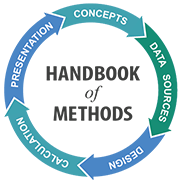An official website of the United States government
 United States Department of Labor
United States Department of Labor

The BLS Handbook of Methods presents detailed explanations of how the Bureau of Labor Statistics (BLS) obtains and prepares the economic data it publishes. BLS statistics are used for many purposes, and sometimes data well suited to one purpose may have limitations for another. This publication aims to provide users of BLS data with the most current information necessary to evaluate the suitability of the statistics for their needs.
Since 1982, BLS has published a compendium of explanations of how the agency obtains and prepares the economic data it publishes. From 1982 to 1997, the Handbook of Methods was published as a printed bulletin, reflecting the methods that were in use as of that date. The drawback of issuing bulletins such as these was that the methods often would be out of date for several years until the next bulletin was issued. In order to address that deficiency, BLS relaunched the Handbook of Methods in 2015 with the intent to always show the latest methods in use for BLS programs.
The redesigned Handbook of Methods takes advantage of the flexibilities that the World Wide Web offers. The home page of the Handbook features a program finder. Users may search by program; they may also filter programs on the basis of criteria they enter into the program finder tool. In addition, each chapter makes use of hypertext links to resources that contain more indepth information.
Throughout, the description of a program’s method follows a common outline: overview, concepts, data sources, design, calculation, presentation, history, and more information.
A brief explanation of each of these sections follows:
In addition to presenting program-specific information, the Handbook features Topic pages. These pages are designed to provide some background and a high-level overview of a particular subject or concept (e.g., seasonal adjustment) that crosses BLS programs. We also include a glossary to help with terms that may be unfamiliar.
The Handbook was written by members of the staffs of the various BLS program offices. It was edited and prepared for publication in the Bureau's Division of BLS Publishing, Office of Publications and Special Studies.
Have questions? Contact us by email or by phone: 202-691-5200.
Information in this publication is available to sensory-impaired individuals. Voice phone: (202) 691-5200; TDD message referral phone: 1-800-877-8339. This information is in the public domain and, with appropriate credit, may be reproduced without permission.